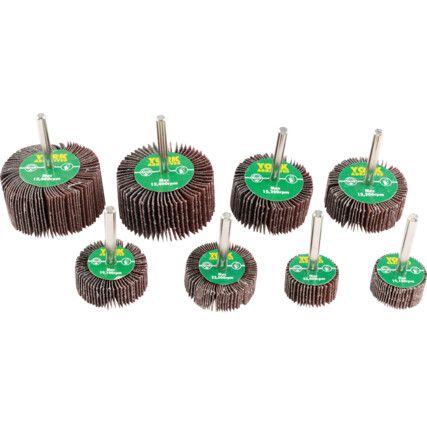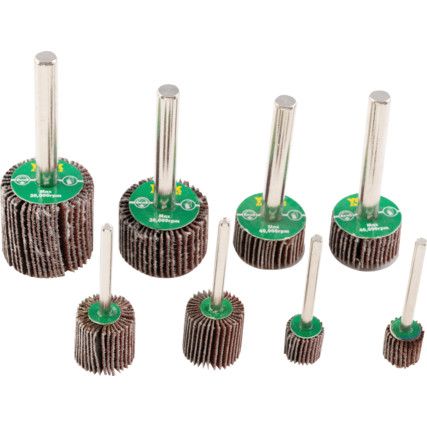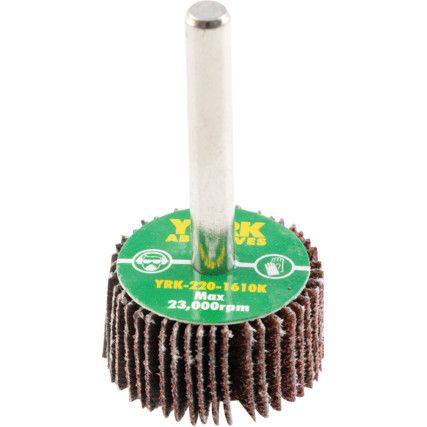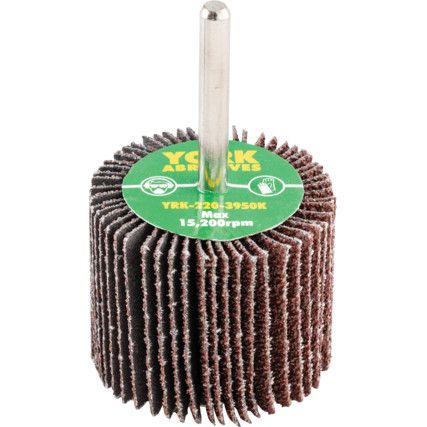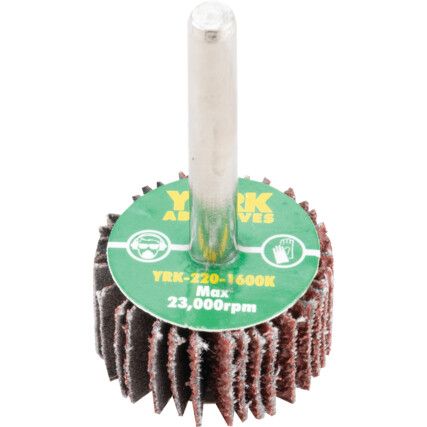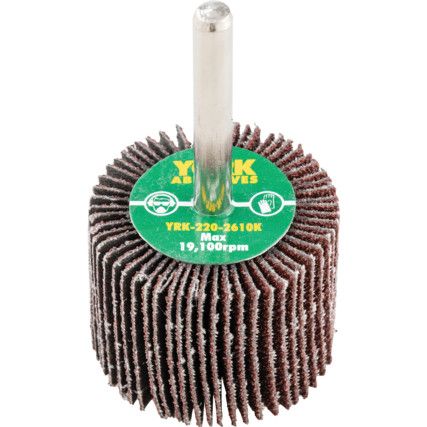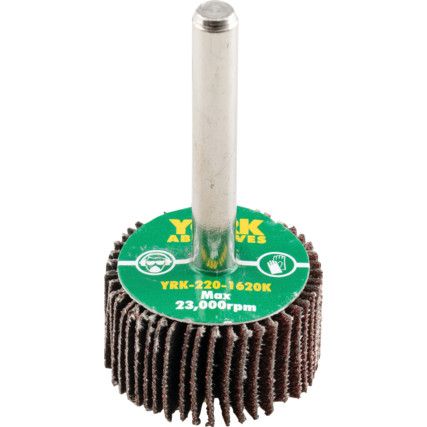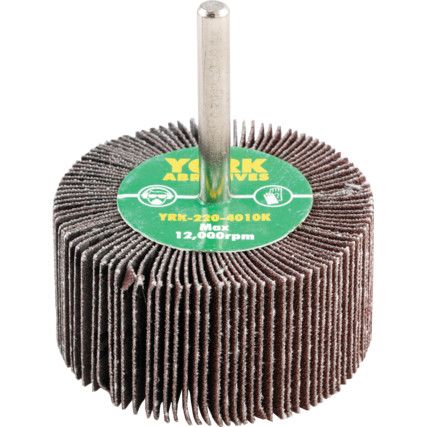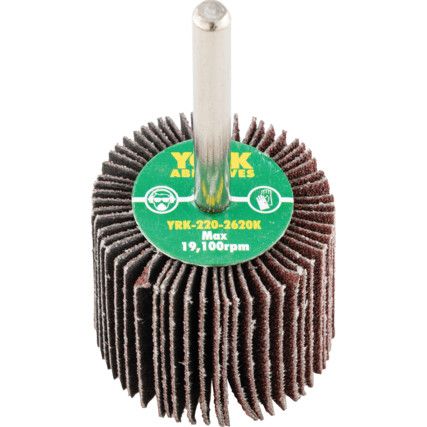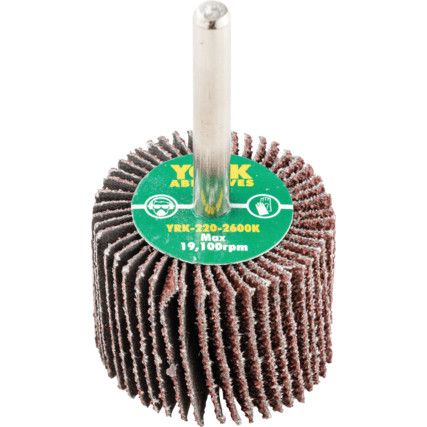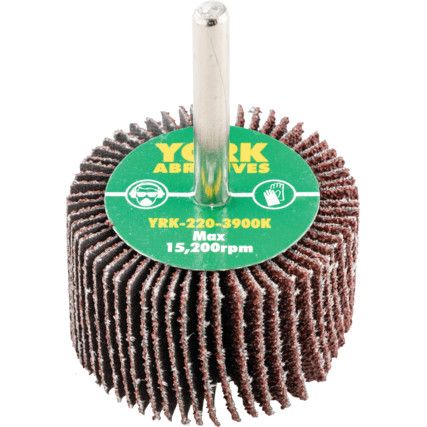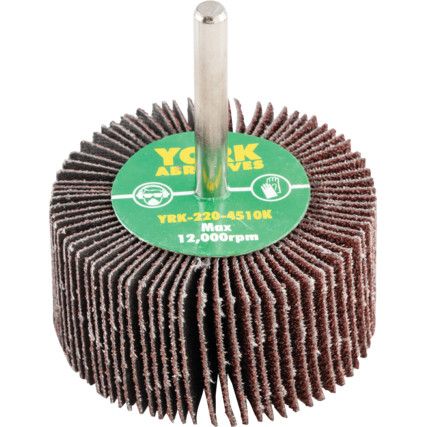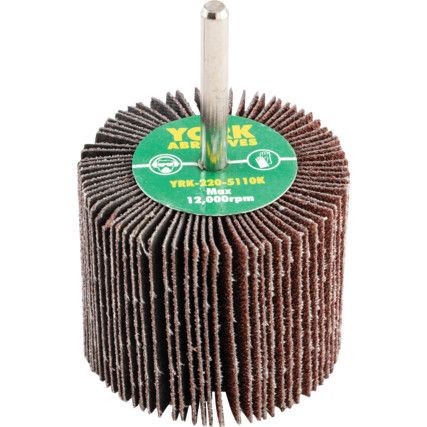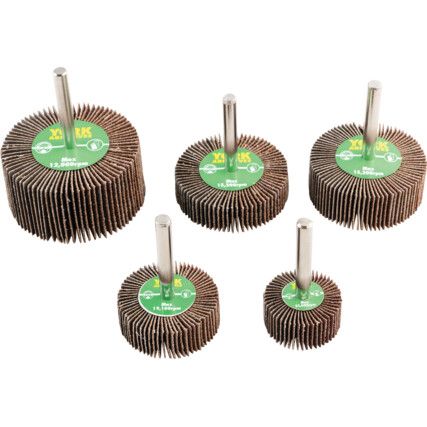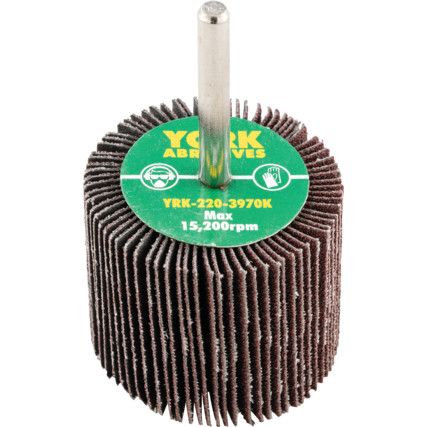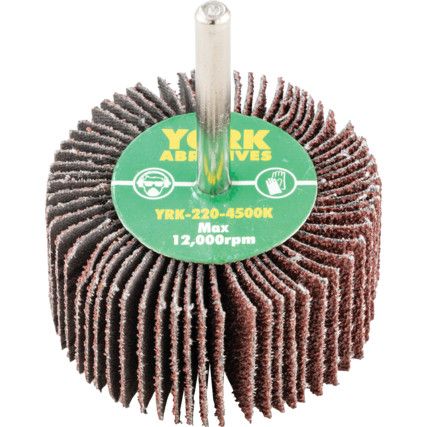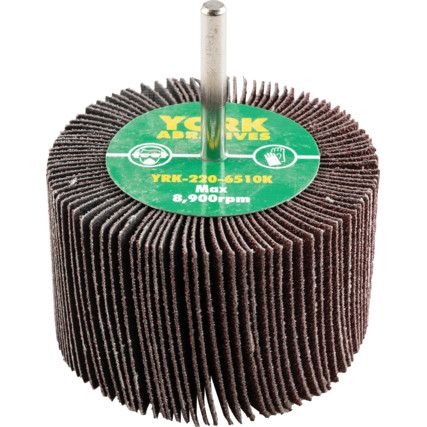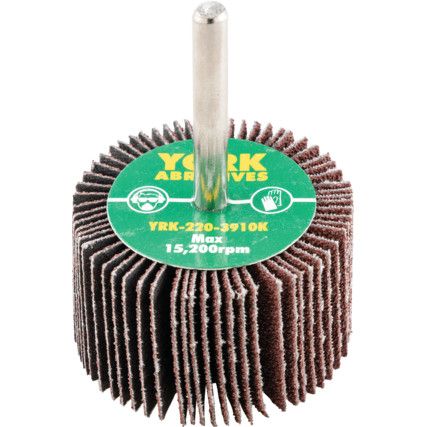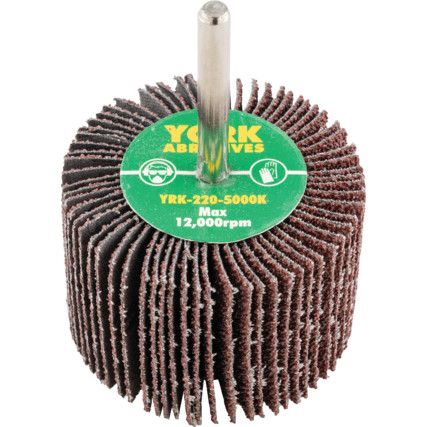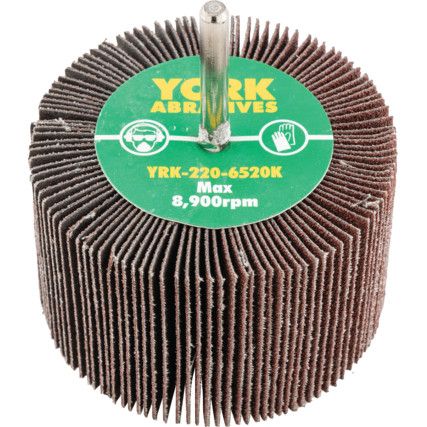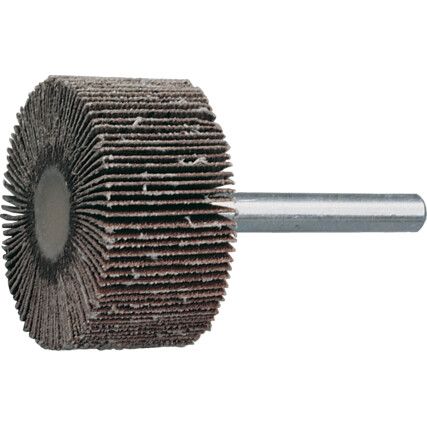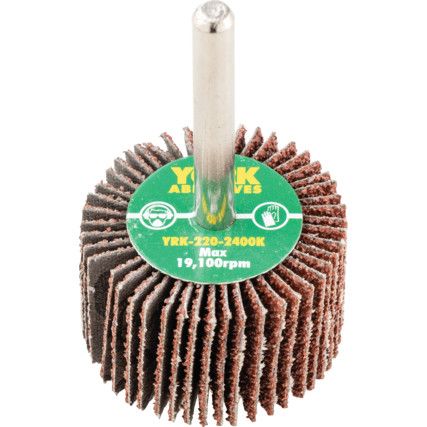Flap Wheels
Suitable for use on wood, plastic and metal, flap wheels are extremely versatile. Ideal for flat, convex and concave sanding, they can access tight spaces and deliver the consistency required for professional workmanship.
Cromwell stocks a wide range of flap wheel sizes, with the right flexible abrasive to suit a range of applications. Sold as individuals or in flap wheel sets, our high-quality stock comes from well-known brands, Pferd®, Garryson® and 3M™.
What are flap wheels?
Mounted onto a circular hub, flap wheels are made up of a series of folded abrasive ribbons, or flaps. Shaped for access into tubes and between fencing for example, flap wheels are manufactured in a wide choice of sizing and grits to suit the application.
Why flap wheels?
The flap wheel design allows for used abrasive to wear away and expose the fresh underside, to maintain consistent removal of material for a clean finish. Ideal for contoured or uneven surfaces, they effectively rejuvenate old metal, removing rust and old paint. They shape and blend wooden workpieces, removing higher levels of material than a conventional sanding disc.
When are flap wheels used?
Used on a wide variety of materials and surfaces, like wood, metal and masonry, flap wheels are used for blending, deburring, and finishing workpieces in a range of industries, including metal fabrication and woodworking.
Flap wheel types
Aside from the different types of abrasive available on flap wheels, there are 2 main types.
• Spindle flap wheels - Mounted to a portable tool to allow for sanding around a workpiece.
• Flange flap wheels - Fixed to a polishing and graining machine or bench grinder for concave or convex sanding.
Considerations when choosing a flap wheel
• Shape - the shape of your workpiece and the type of work you intend to do will dictate the type of flap wheel you need.
• Size - larger workpieces require larger flap wheels.
• Material - choose your abrasive based on the type of work you'll be carrying out. Some types of abrasive are for metal only and may damage a wooden workpiece.
• Abrasive grain - standard grain delivers high stock removal, whereas high-density grain shapes, blends and finishes.
Flap wheel jargon buster
To help you understand the range and applications a little better, we've put together some key terms and definitions.
• De-burring - removing sharp metal burrs from a workpiece
• De-nibbing - removing impurities and nibs from a painted or coated surface
• Friability - describes the abrasive's capacity to break down to provide a clean, new surface
• Lapping - the name of the process for polishing a workpiece
• Non-woven abrasives - where the abrasive backing material is made from an open structure of fleece or nylon
• Aluminium oxide - made from refined bauxite ore, this sharp abrasive is ideal for metal surfaces
• Alumino silicate - a naturally occurring by-product, this refractory abrasive is used widely on metal and concrete
• Alumina zirconia - a fusion of aluminium oxide and zirconium, this abrasive grit is long lasting and suitable for use on metal and wood for high product removal
FAQs
What's the difference between a flap wheel and a flap disc?
Both abrasive tools deliver a high-level finish and can be used on a range of materials, such as metal, wood and masonry. They offer a cooler operation than some grinding tools to avoid scorching the workpiece and are steady in operation to prevent fatigue.
The difference between the two is the shape. While a flap disc is ideal for flat, concave and convex applications, a flap wheel allows access into harder to reach areas, such as inside wheels and piping.
How does a flap wheel work?
A flap wheel subjects a workpiece to continuous abrasion from all angles of the flaps. As a flap is worn away its immediately replaced with fresh stock beneath to ensure a consistent and clean finish.
